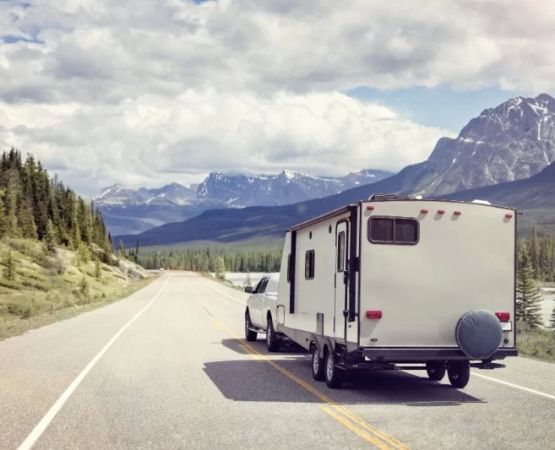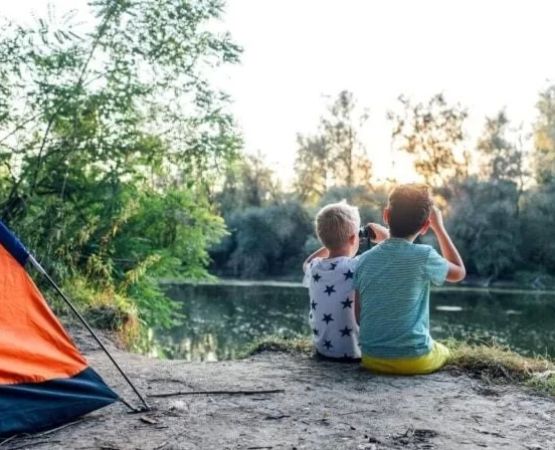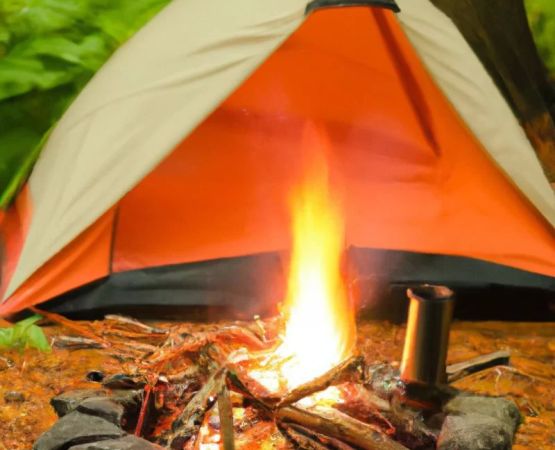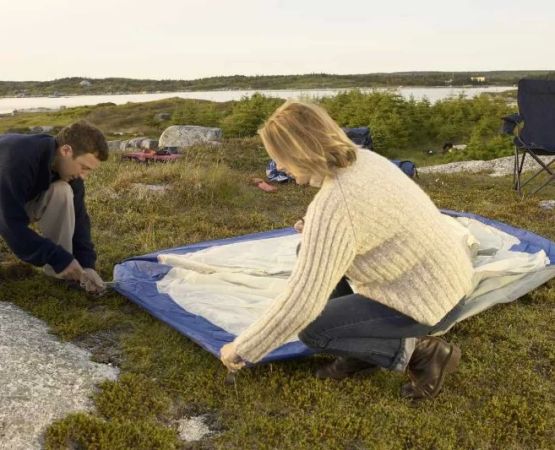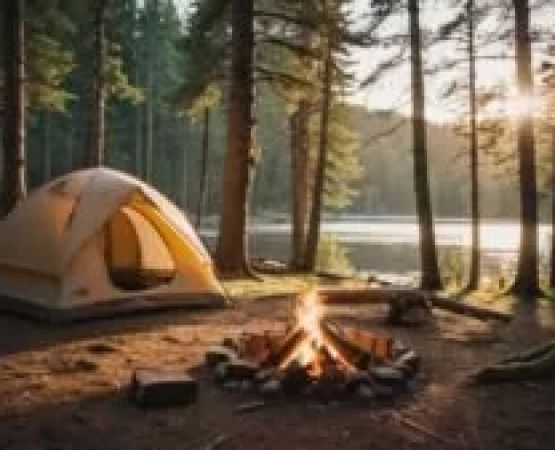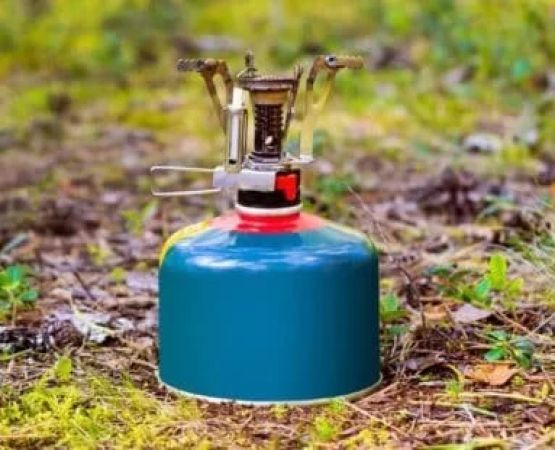Best Camping Gear for Desert Adventures in the U.S.
Camping in the desert is one of the most surreal and humbling experiences I’ve ever had. From the vast, open spaces of Death Valley to the red-rock canyons of Utah, the desert holds a special kind of beauty—but it also demands serious respect. I learned this the hard way during my first trip when I underestimated just how harsh and unforgiving these environments can be. That’s why having the right gear is not just helpful—it's essential.
1. Shelter That Shields You from the Heat
1.1 Lightweight and Reflective Tent
My go-to is a tent with a light-colored, UV-reflective rainfly. During a scorching summer in Arizona’s Sonoran Desert, my REI Co-op Half Dome SL 2+ kept me cooler than any darker tent I’d used before. The ventilation was a lifesaver, especially during nights when the temperature barely dropped.
1.2 Ground Cover and Shade Structures
In sandy or rocky terrain, a quality ground tarp or footprint prevents wear and tear on your tent floor. I also pack a pop-up canopy or a lightweight tarp setup to create a shaded kitchen or rest area. Once in Moab, a sudden mid-day heatwave had us retreating to our tarp setup to avoid heat exhaustion while we rehydrated and prepped lunch.
2. Hydration Systems and Water Management
2.1 High-Capacity Water Reservoirs
Desert camping means carrying more water than you think you’ll need. I never leave without my 10-liter MSR Dromedary bag. Once, while camping in Joshua Tree, a fellow camper ran out of water—fortunately, I had extra to share thanks to packing redundantly.
2.2 Hydration Packs for Day Hikes
For exploring canyons and sand dunes, I use a CamelBak M.U.L.E. with a 3-liter reservoir. It’s lightweight, has room for snacks and first aid, and lets me drink on the move. It’s saved me from dehydration more than once in the blistering sun of Nevada’s Great Basin.
2.3 Water Filtration Options
While desert water sources are rare, having a filter like the Sawyer Squeeze can turn surprise streams or springs into backup hydration points. I found a trickle in Big Bend once that kept me out of a very tight spot—don’t count on finding water, but be ready just in case.
3. Sleep System for Extreme Temperature Swings
3.1 Sleeping Bag Rated for Cool Nights
People often assume deserts stay hot at night, but I’ve shivered through 40°F nights in the Mojave. A 20-30°F rated sleeping bag and a good sleeping pad like the Therm-a-Rest NeoAir XTherm kept me warm and insulated against the cold ground.
3.2 Lightweight Sleeping Pads
A high R-value pad is key. The desert floor may look soft, but it often hides rocks and thorns. I once had to patch a regular air mat that got punctured near Sedona—lesson learned. Now I carry a repair kit and opt for tougher, closed-cell foam backups.
4. Clothing and Sun Protection
4.1 Breathable, UPF-Rated Apparel
I wear long-sleeve shirts with UPF protection, wide-brim hats, and neck gaiters. One time in Anza-Borrego, I underestimated the sun and paid the price with a brutal sunburn. Ever since, I’ve stuck with my Columbia Silver Ridge shirt and Outdoor Research hat combo.
4.2 Layering for Cold Desert Mornings
A down vest or fleece jacket is non-negotiable. It might be 90°F by noon, but at dawn in New Mexico’s high desert, it was 38°F—and I was thankful for my lightweight puffer and wool beanie.
5. Cooking and Food Storage Solutions
5.1 Compact Stoves and Wind Shields
Wind in the desert is no joke. My Jetboil Flash paired with a lightweight windscreen makes boiling water efficient even in gusty conditions. Cooking pasta during a windy evening near the Painted Desert would’ve been impossible without it.
5.2 Cooler Management and Food Safety
I use a high-performance cooler like a YETI Tundra to keep perishables from spoiling. In desert heat, it’s critical to store food properly—once, meat spoiled after just a few hours in subpar storage. Now I pack frozen water bottles to help keep temps down and serve as emergency hydration if needed.
6. Navigation and Emergency Tools
6.1 GPS and Map Tools
Getting lost is easy in terrain that all looks the same. I use a Garmin GPSMAP 66i for precise tracking, but I also carry paper maps and a compass. One trip in the Escalante wilderness taught me how quickly electronics can fail in extreme heat.
6.2 First Aid and Snake Bite Kits
Deserts have unique hazards, including rattlesnakes and scorpions. I pack a snakebite kit and a comprehensive first-aid kit. When a friend got stung by a scorpion in southern Arizona, our quick response made all the difference.
7. Lighting and Power Sources
7.1 Solar Chargers and Headlamps
Sunshine is one thing deserts have in abundance—so solar panels like the Goal Zero Nomad 10 keep my devices powered. A reliable headlamp with red light mode helps preserve night vision during those beautiful stargazing nights in the desert.
8. Leave No Trace and Environmental Responsibility
Desert ecosystems are delicate. I pack all trash out, avoid trampling cryptobiotic soil, and use wag bags in areas with no bathroom facilities. Respecting the land ensures it remains pristine for others and wildlife alike. My group always carries a dedicated trash bag and portable toilet system to follow Leave No Trace ethics to the letter.
Why the Right Gear Changes Everything
With the right preparation, desert camping can be transformative. I’ve watched the sunrise over dunes in White Sands, heard coyotes howl under the stars in the Mojave, and felt more alive than ever. But none of it would’ve been safe or enjoyable without the right gear. Whether you're heading to Utah’s red cliffs or exploring Texas’ desert plains, what you pack matters more than you might think.
Thinking about a desert camping trip? Visit Pine Cliff Resort for expert recommendations and top-tier gear selections to make your adventure unforgettable.


